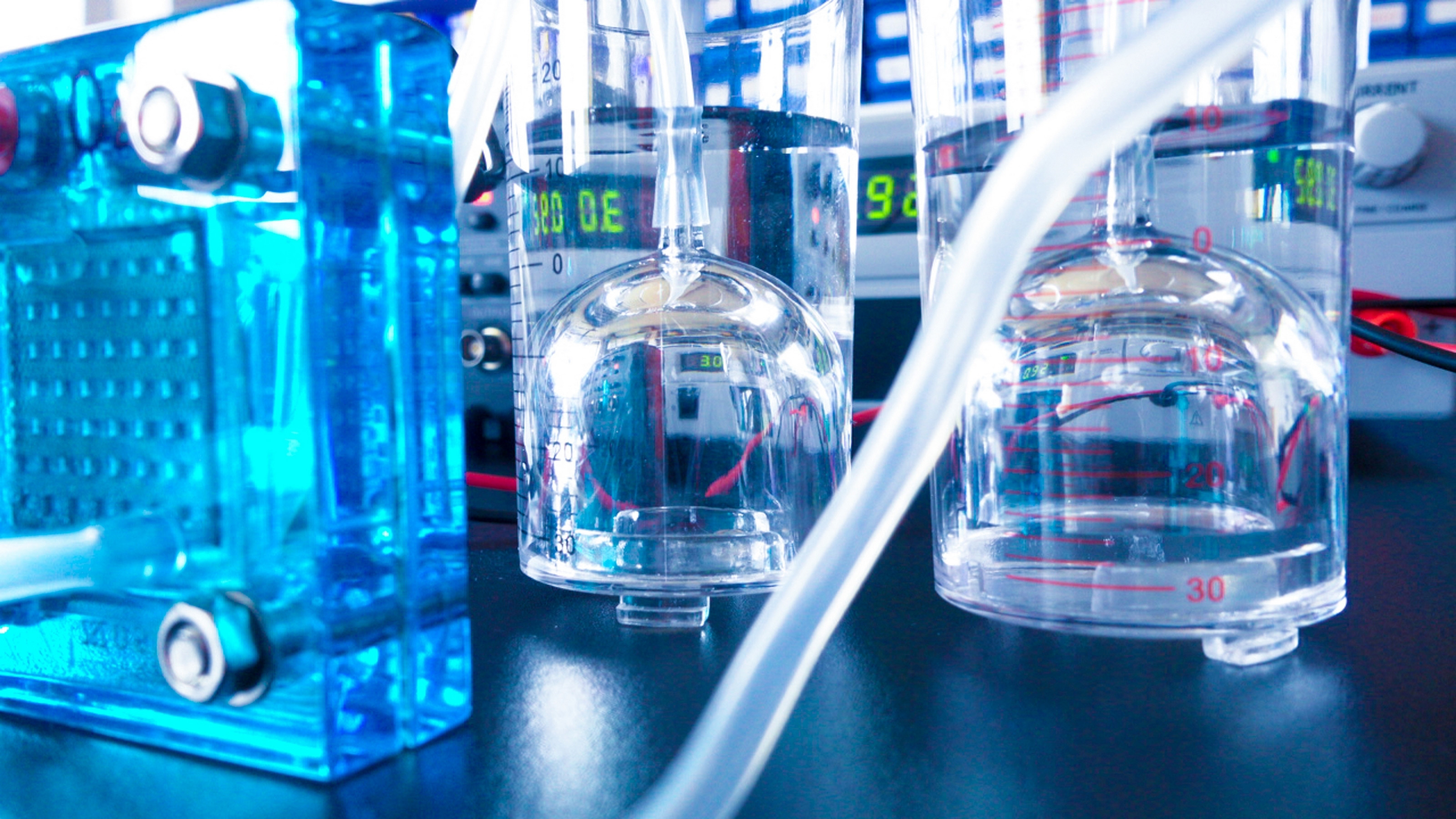Researchers demonstrate how a novel membrane allows separation of hydrogen gas
04/18/2022 / By Nolan Barton

A group of researchers from Nagoya Institute of Technology in Japan led by Professor Yuji Iwamoto collaborated with researchers from France to successfully demonstrate how a novel membrane allows highly selective separation of hydrogen gas generated from the photoelectrochemical (PEC) reaction.
“Membrane separation is attractive as a low-cost hydrogen gas purification technology. However, current techniques face several challenges, for example, water-induced swelling with polymer membranes and lower hydrogen permeance with metal, polymer and supported liquid membranes,” Iwamoto said.
The study wanted to address the challenges of efficiently separating hydrogen gas from a mixture of gasses (called “syngas”) under different environmental conditions. A paper about the study was recently published in the journal Separation and Purification Technology.
The researchers first developed an organic-inorganic hybrid polymeric membrane, primarily composed of a polymer called “polycarbosilane” (PCS) formed on an aluminium oxide (Al2O3)-based porous support.
“By using high-molecular-weight PCSs with a melting point above 200 C, we showed that a superhydrophobic PCS membrane could be deposited on a mesoporous ?-Al2O3-modified macroporous ?-Al2O3 tubular support,” Iwamoto explained.
The researchers proceeded to test the PCS membrane under PEC reaction conditions. As expected, the PCS membrane showed high hydrophobicity. Hydrophobicity is the association of nonpolar groups or molecules in an aqueous environment, which arises from the tendency of water to exclude nonpolar molecules.
Under the flow of a simulated highly humid gas mixture at 50 C, the PCS membrane exhibited excellent hydrogen selectivity. Further analysis revealed that the preferential hydrogen permeation through the PCS membrane was governed by the “solid state diffusion” mechanism.
Overall, the PCS membrane exhibited efficient hydrogen gas separation irrespective of the ambient environmental conditions provided.
Hydrogen has been hailed as the “fuel of the future” for two main reasons. First, compared to the conventionally used hydrocarbons, hydrogen exhibits higher energy yield. Second, the commercial use of hydrogen fuel, which yields only water as an offshoot product, would help mitigate the imminent global warming crisis by reducing the use of exhaustible and polluting fossil fuels.
Solar hydrogen production through PEC water-splitting reaction is an attractive “green” method of hydrogen fuel production because of its potential for high conversion efficiency, low operating temperatures and cost-effectiveness. Ongoing research has been focusing on efficient and environment-friendly ways to produce of hydrogen fuel. The collaboration between researchers from Japan and France could be a step forward towards a hydrogen-based society.
With the development and characterization of the new PCS membrane, it is expected that its commercial implementation would facilitate the use of hydrogen fuel for energy needs and curb the use of non-renewable fossil fuels.
“With this technological development, we expect great progress in environmental-friendly and sustainable hydrogen production,” Iwamoto said.
Scientists develop a novel membrane to boost performance of AEMFCs
Developing hydrogen fuel cells had been at the center of the global efforts to realize a hydrogen economy and achieve a sustainable world. (Related: Enormous supply of clean hydrogen fuel can now be tapped for the hydrogen economy.)
Scientists from South Korea recently developed a thin and strong novel membrane that could address the drawbacks of anion exchange membrane fuel cells (AEMFCs).
The AEMFCs, which convert chemical energy to electrical energy via the transport of negatively charged ions (anions) through a membrane, have received attention in the past decade due to their low-cost and relative environment friendliness compared to other types of fuel cells. But AEMFCs have low ion conductivity, low chemical stability of the membrane and an overall lower performance rate than their counterparts.
The scientists reported the potential solution to those issues in a study published in the Journal of Materials Chemistry A.
To develop the membrane, the scientists chemically bonded two commercially available polymers, poly(2,6-dimethyl-1,4-phenylene oxide) (PPO) and poly(styrene-b-(ethylene-co-butylene)-b-styrene) (SEBS) without using a cross-linking agent.
A previous study made a similar attempt to fabricate anion exchange membranes (AEMs) by cross-linking PPO and SEBS with diamine as a cross-linking agent. While the AEMs displayed excellent mechanical stability, the use of diamine could have led to different reactions other than those between PPO and SEBS, which made it difficult to control the properties of the resultant membrane.
In this one, the scientists cross-linked PPO and SEBS without any cross-linking agent to ensure that only PPO and SEBS react with each other. The strategy also involved adding a compound called triazole to PPO to increase the membrane’s ion conductivity.
Membranes fabricated using this method were up to 10 ?m thin and had excellent mechanical strength, chemical stability and conductivity even at 95 percent room humidity.
When operated at 60°C, the fuel cell exhibited stable performance for 300 hours with a maximum power density surpassing those of existing commercial AEMs and matching cutting-edge ones.
“The polymer electrolyte membranes in our study can be applied not only to fuel cells that generate energy, but also to water electrolysis technology that produces hydrogen. Therefore, I believe this research will play a vital role in revitalizing the domestic hydrogen economy,” said Incheon National University Professor Tae-Hyun Kim, who led the study.
Follow HydrogenWater.news for more news and information related to hydrogen fuel.
Sources include:
Submit a correction >>
Tagged Under:
Anion exchange membrane fuel cells, Chemistry, fuel, hydrogen, hydrogen economy, hydrogen fuel cells, Hydrophobicity, physics, polymeric membrane, Separation and Purification Technology, solar hydrogen production
This article may contain statements that reflect the opinion of the author
RECENT NEWS & ARTICLES
COPYRIGHT © 2017 DISCOVERIES NEWS




















